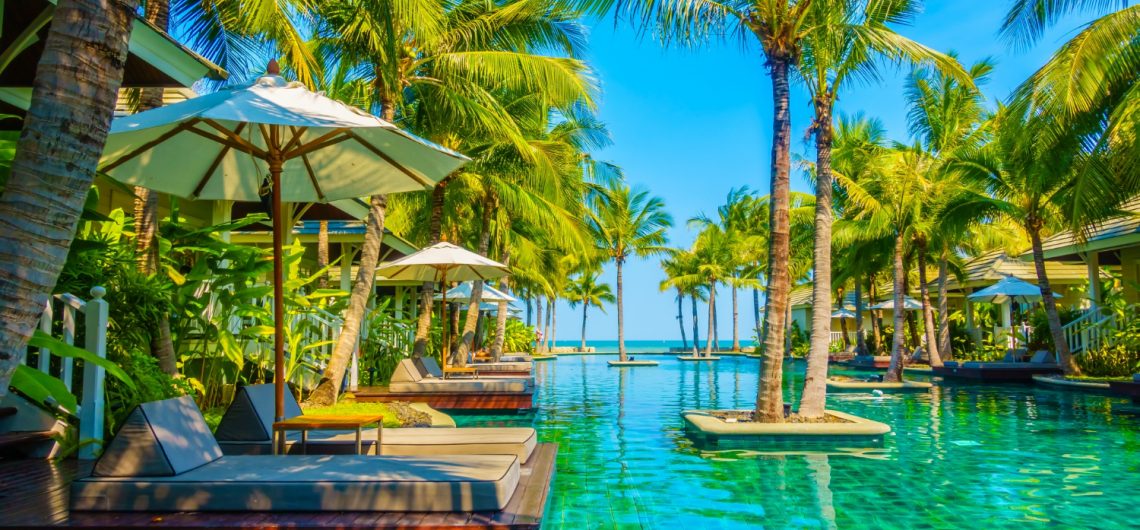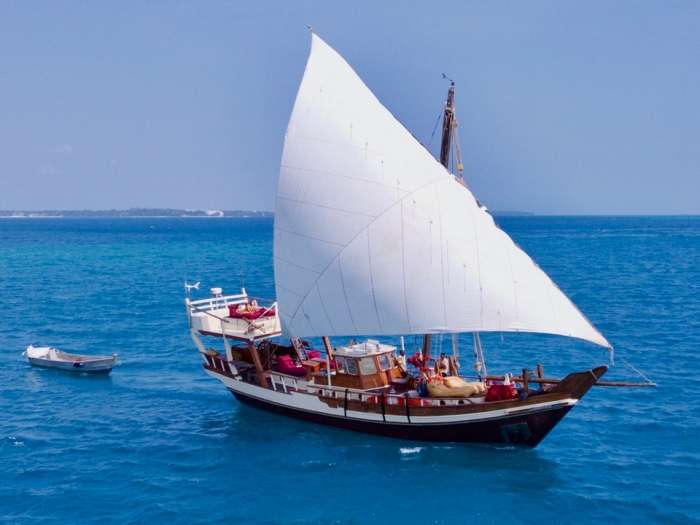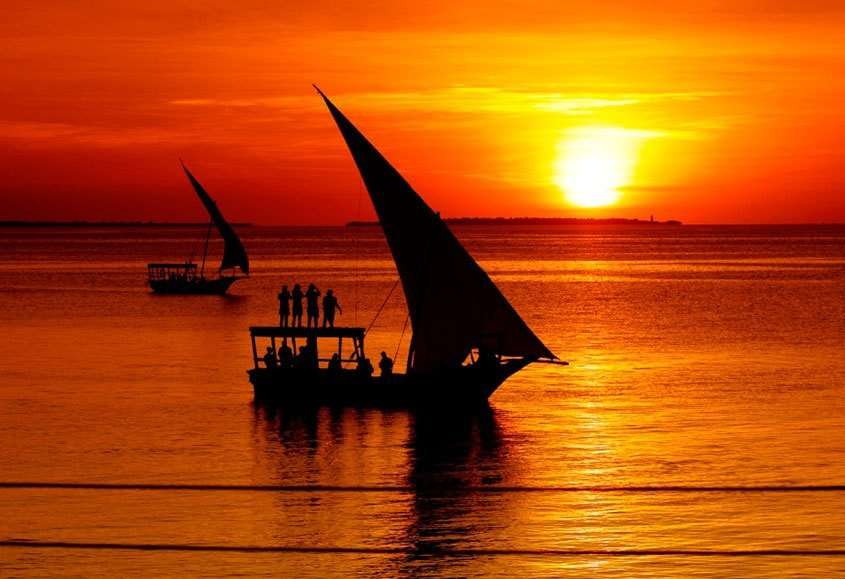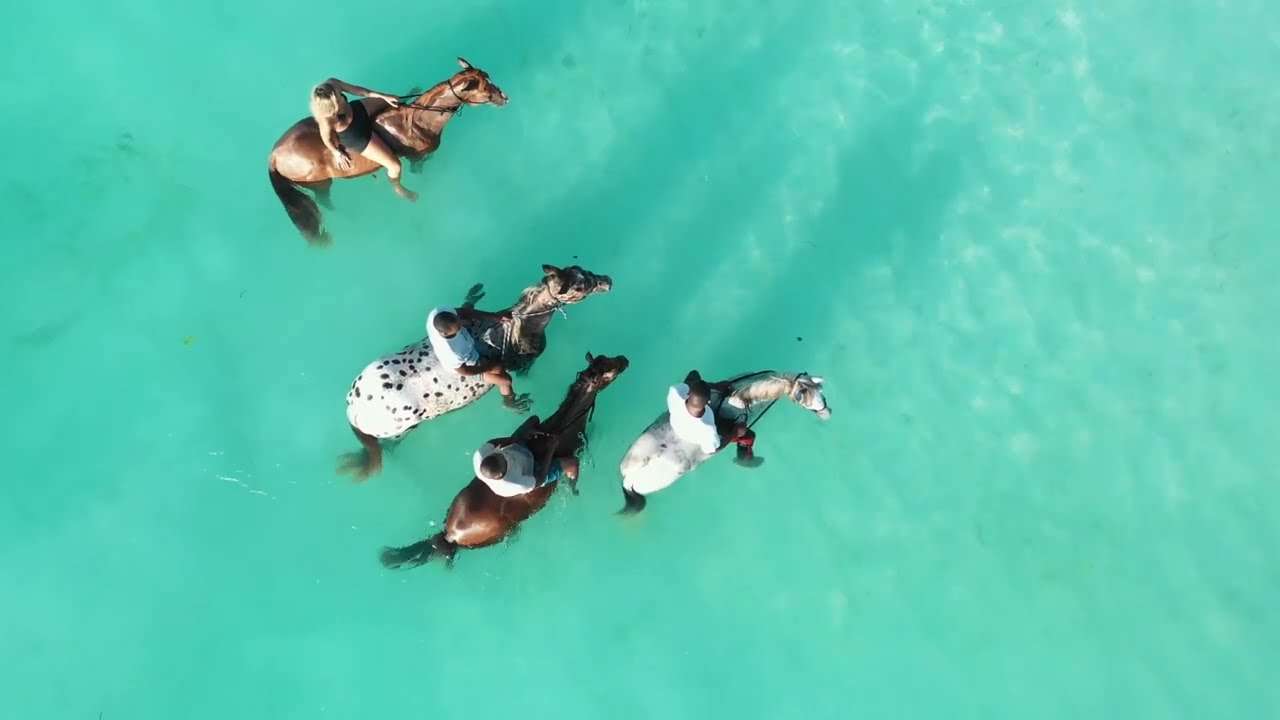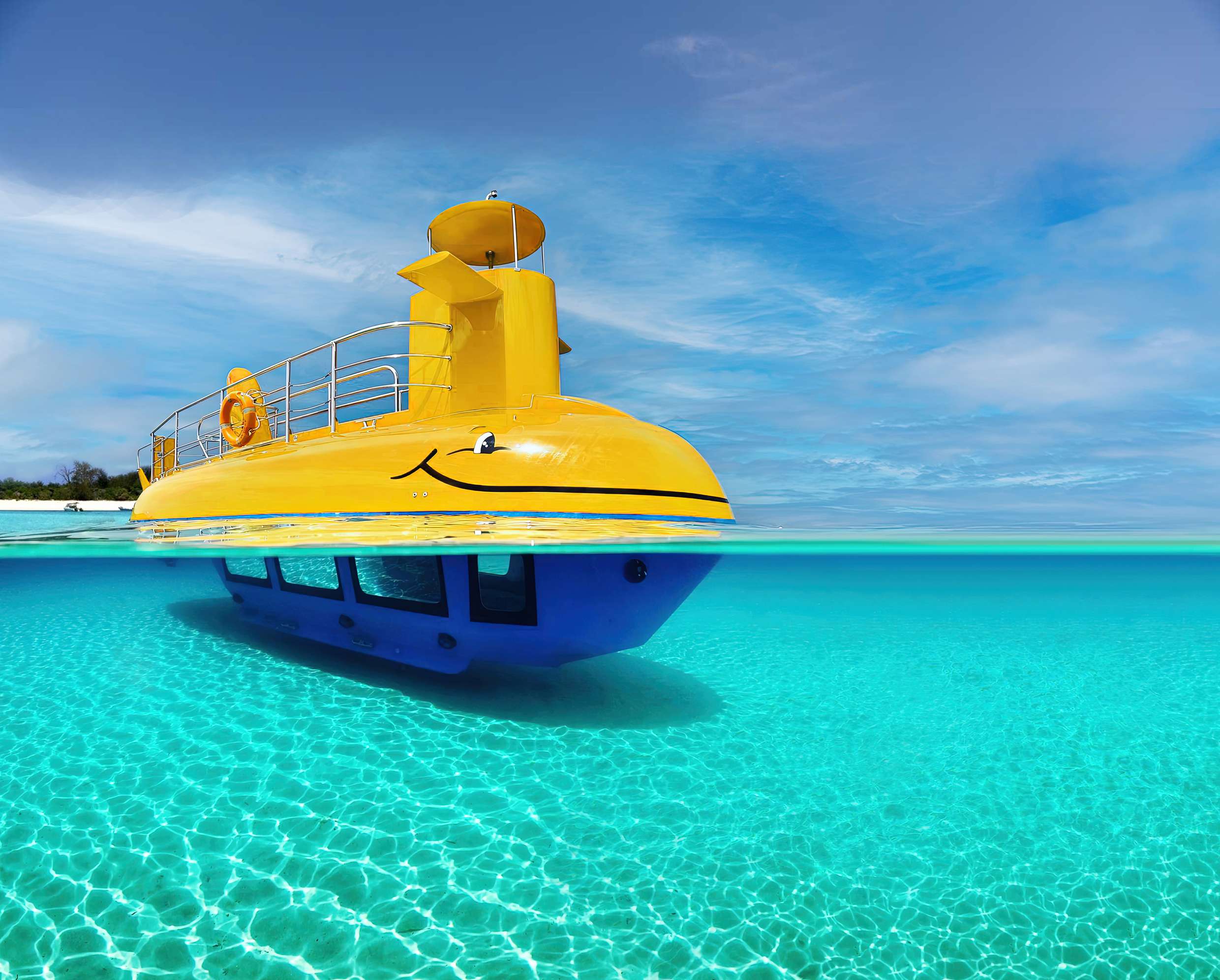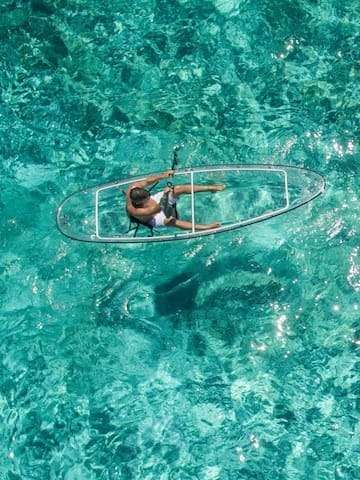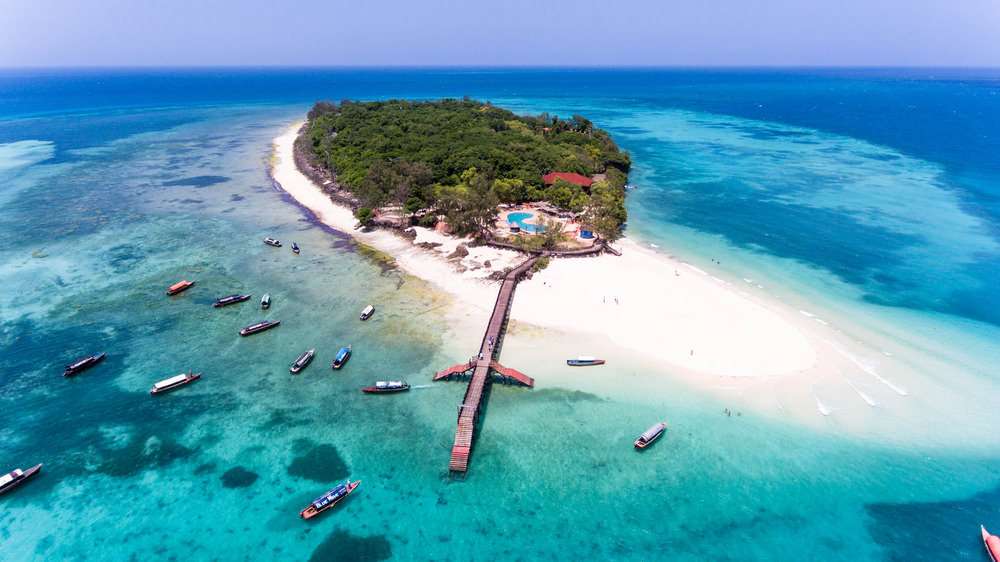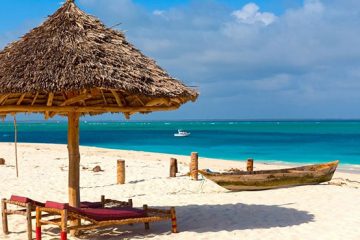Zanzibar Island
The Zanzibar archipelago consists of more than 50 islands, ranging from tiny outcrops to the larger, more populated islands of Zanzibar, which are more properly called Unguja and Pemba. The beaches are often stunning, with powdery white sand shaded by palm trees. The sea is shallow, but venture further out into the sparkling, turquoise water, and you’ll find coral reefs for great snorkeling and diving. The larger islands are lush and highly fertile, and everywhere, the air is suffused with the aroma of fruit and spices: it’s an intoxicating, exotic atmosphere.
Zanzibar Island is known as Africa’s tropical paradise, offering the world’s most beautiful beaches—miles and miles of white sandy beaches dotted with palm trees, surrounded by the clear azure water of the Indian Ocean. Zanzibar Island is part of the Zanzibar archipelago, together with Pemba Island and many smaller islands. These islands are also called the Spice Islands because of their rich history in the spice trade and many spice plantations.
Popular as a post-safari choice, a Zanzibar holiday can also be a great stand-alone escape. The main island offers exceptional accommodations, from simple beach lodges and small boutique hotels to all-inclusive beach resorts and luxury hotels.
If you’re searching for a remote island getaway, Tanzania’s Indian Ocean coast has two other gems: Mafia Island, a long-time favorite of diving aficionados, and the newly accessible hideaway of Fanjove.
Although Zanzibar receives holiday visitors all year round, most come outside of the main rainy season, between June and February, when Zanzibar’s weather is at its best. This can link perfectly with a safari in Tanzania, which broadly shares the same weather pattern.
Zanzibar Island Beach holidays
Options for a Zanzibar beach holiday are many, but broadly, the island can be divided into five areas: Nungwi in the north, the east coast, the southeast, the west coast, and a few offshore islands.
Two or three hours’ drive from Stone Town, the village of Nungwi marks the northernmost tip of Zanzibar. Nungwi has long been a magnet for visitors seeking paradise, surrounded on three sides by a turquoise-blue ocean. Come for some good diving and beaches, and proximity to a lively village where there’s always a lot going on.
Zanzibar’s east coast is lined with long, powder-white beaches. To the north, numerous small resorts boast similar beaches, yet all are quite different. Offshore, you find the magical Mnemba Island – the ultimate island lodge for those who can afford it.
Continuing along Zanzibar’s southeast coast, the beaches remain stunning: powder-white sand with a barrier reef, lots of palm trees, and a wide lagoon between the beach and the reef. The villages become a little sleepier and more relaxed as you head south, and Jambiani, in particular, is very relaxed indeed: for an authentic visit to a friendly village, you can’t beat it.
In southwest Zanzibar, the Fumba Peninsula is a very laid-back and friendly island corner with two good lodges. Offshore, the award-winning eco-resort on Chumbe Island is also worth visiting.
A 30-minute flight northeast of Zanzibar Island, Pemba Island is comparable in size but far more traditional in outlook, and visitor numbers here are tiny. Apart from a handful of honeymooners, most come for the diving, which can be excellent – although it’s best suited to advanced divers.
Equally magical, although not part of the Zanzibar Archipelago, is the Mafia Archipelago. More remote and quieter than many places in Zanzibar, Mafia Island offers some superb diving and snorkeling in its marine park, served by just a few small lodges. On the Tanzania beach holiday scene, Fanjove Island is an ideal spot to wind down after a safari in southern Tanzania.
Activities on a Zanzibar Island beach holiday
Sun, sea, and sand: a Zanzibar beach holiday offers these in abundance. Zanzibar beaches differ, but almost all feature crystal-clear waters lapping at the edge of powdery-white sand that trickles through the toes. Be aware that off many beaches, especially on the east coast, low tide can reduce the broad, shallow lagoon to a virtually empty puddle, and swimming is often only possible when the tide is in. It is always worth consulting online tide tables, as the daily range along the East African coast varies through each month and typically ranges from around 1 meter to more than 3 meters.
Zanzibar beaches offer some excellent snorkeling and world-class diving – which is centered around Mnemba Atoll to the northwest and the Menai Bay Conservation Area to the island’s southwest. But even if you’re not a water enthusiast, the chance to view the coastline from a traditional wooden dhow is not to be missed.
The team at Kiwoito Africa has visited almost every one of the 250 or so places to stay in Zanzibar to bring you a selection of the best. Some offer exclusivity at a price; others are all-inclusive beach resorts; others are big international beach hotels. However, most of Zanzibar’s best places to stay are relatively low-key beach lodges.

ZANZIBAR PRISON ISLAND
The island is situated 5.6km northwest of Stone Town, Unguja. It is also known as Changuu Island, which is a Swahili name for a fish or Quarantine island located in the Zanzibar Archipelago.
The island has an abundant history. No one stayed there until the early 1960s, when the first Sultan of Zanzibar, Majid bin Said, gifted it to two Arab slave owners who used the island as a prison for rebellious slaves.
In 1893, British First Minister Lloyd Matthews took the island and planned to build a prison there. Although the building work was completed in 1894, the prison never housed any prisoners.
In the early 1920s, Prison Island was transformed into a quarantine facility that served British territories in East Africa for patients who showed yellow fever symptoms. The prison buildings were converted into a hospital, and yellow fever patients were monitored for some time before they were permitted to leave.
Prison Island is highly famous for its population of giant Aldabra tortoises. The tortoise species are not local, as in 1919, the British governor of Seychelles gifted 4 tortoises to Prison Island. From there, the number of tortoises began to increase rapidly and by 1955, prison island had an estimated tortoise population of 155

Prison Island tends to be one of the best places to visit. It is a typical tropical paradise with a great deal of wildlife and great scenery.
Prison Island is a great day trip for travelers who want to immerse themselves in Zanzibar’s history while witnessing the tortoise’s socialization capacity with an experienced team; Kiwoito Africa is ready to give you a pure taste of Zanzibar prison island.
Are you ready for this great day of snorkeling around the coral reefs, a site of colorful fish, beautiful starfish, and seashells, or relaxing on the white sandy beach? Upon your return, admire the breathtaking view of Stone Town, the bay, and the archipelago.
This tour includes
- Guided half-day trip of about 3-4 hours
- experienced guide as per your language request.
- Transportation: from any hotel in Zanzibar
- Admission to the Prison island
what to pack
- Swimsuit and towel
Our comments
- Suitable for all ages and fitness levels
- It is suitable to combine with other activities
- Don’t forget to carry a small tip for the tortoises’ reserve
NUNGWI VILLAGE.
It is also known as Ras Nungwi, a large village located in the far northern end of the island of Zanzibar. With a population of 30,762, Nungwi is the second-largest settlement on the island. It is situated in the Nungwi Ward in the Kaskazini A District of the Unguja North Region. It is about 35 miles (56 km) north of Zanzibar Town on the Nungwi Peninsula, about an hour’s drive from Stone Town. To the south, Nungwi shares a border with the neighboring Matemwe- and Tazari villages.
Nungwi village is the liveliest beach spot in Zanzibar. Traditionally a fishing village and dhow-building center, it is now a popular tourist destination.
Activities that can be done at Nungwi
- Local village tour
Discover how locals live and make their livelihoods. Then, visit Mnarani Aquarium, which is home to several endangered species.
- Spices tour
A Zanzibar classic! Get familiar with spices, herbs, and exotic fruits. The Spice Tour is one of our most popular excursions in Zanzibar, the Spice Island.
- Traditional cooks tour
This favorite tour includes visiting a local organic spice farm and walking through a nearby village. Learn about local life and try your hand at traditional cooking.
This tour includes
- Transfer from Hotel and back
- Professional local guide
- Lunch
- Exotic fruit tasting
- Drinking water
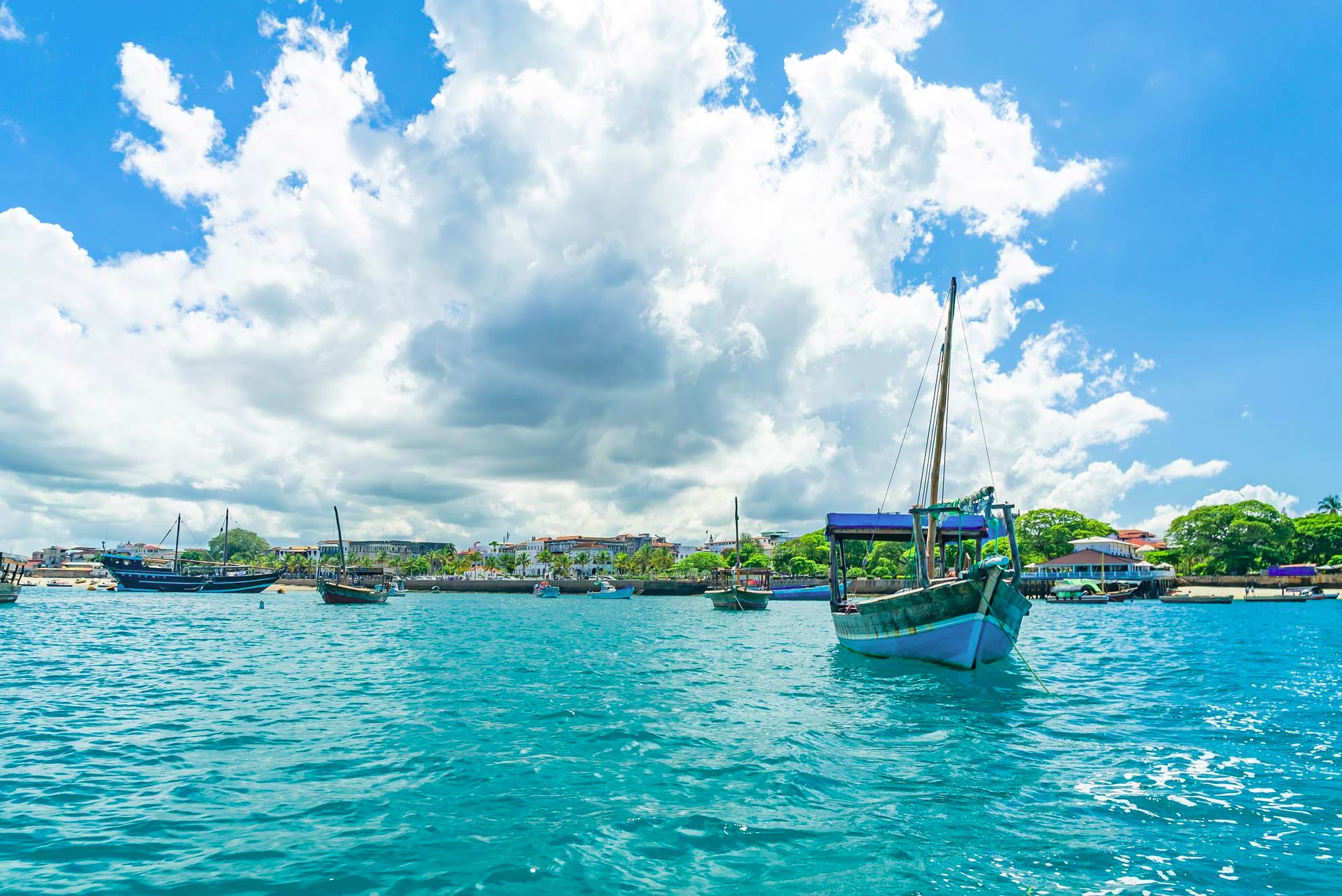
STONE CITY
Zanzibar Stone City is renowned for its beauty and the good arrangement of its buildings. It is the main city in Zanzibar and is a city of prominent historical and artistic importance in East Africa. Its architecture, mostly dating back to the 19th century, reflects the diverse influences underlying the Swahili culture, with a unique mixture of Moorish, Arab, Persian, Indian, and European elements.
Activities that can be done at Stone City
- Walking Tour
Starting from the House of Wonders (Beit-el-Ajaib), Mizingani Rd, Stone Town, Zanzibar City, Tanzania, travelers will learn the story behind the name of the House of Wonder.
Then head towards the old Fort (Ngome Kongwe), Mizingani Rd, Stone Town, Zanzibar City, Tanzania. The traveler will see the original wall from the chapel and the theater.
Finally, we will stop at the Freddie Mercury Museum, Kenyatta Road, Stone Town, Zanzibar City, Tanzania, where the traveler will learn the history of a famous singer.
CHUMBE ISLAND
This is a private island found at Zanzibar and developed in 1991 with the aim of nonprofit rather than coral reef conservation
activities that can be done at chumbe
-
SNORKELING
Our well-organized snorkeling tour takes you by boat to the edge of our Coral Reef Sanctuary, where the view opens up a world of breathtaking sights.
Each snorkeling tour lasts for about one hour and provides discoveries for our guests. With each visit, you are unlikely to be disappointed! Whether you are a snorkeling newcomer or a professional, our competent guides will ensure you get the most out of it safely and responsibly. If you decide to explore the reef on your own, please make sure to inform our guides for your safety.
-
Coconut crab walk
our guests can encounter giant Coconut crabs in the coral rag forest. Coconut crabs can reach up to 45 cm in diameter and are the largest living land crabs in the world! During the daytime, they hide in caves and crevices, but after sunset, they roam around to look for food. Although coconuts are their preferred diet, they are scavengers and eat almost everything they can find.
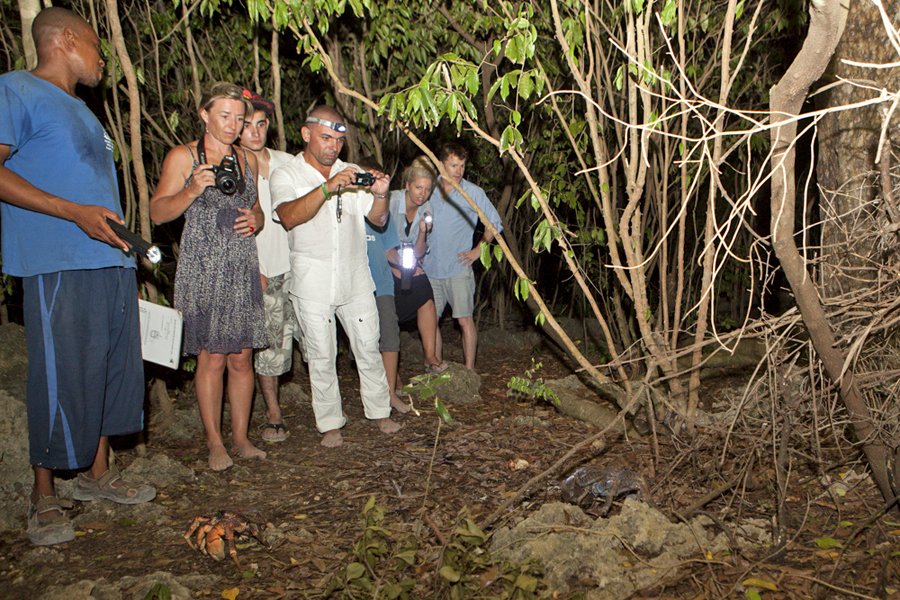
-
Shore walking
This involves walking shorelines that are covered by seawater at high tide and exposed during low tide. Guided shore walks, led by our experienced Kiwito Africa guides who are familiar with the shore, ensure your safety and will show you fascinating marine organisms, usually well camouflaged or sometimes hidden.

-
FOREST WALK
Zanzibar Beaches lets you Join our one-and-a-half-hour forest journey on the forest. Here, you learn more about the island’s geology, the medicinal uses of local trees and shrubs, and hidden fauna that is difficult to spot.
the footpath led down into a large intertidal pool overgrown with mangroves and shaded by huge
baobab trees, where the seawater rises and falls with the tides and where you may observe many creatures adapted to these conditions
birds hiding in the thicket, hermit crabs crawling over leaves, and lizards resting on the ground on your Zanzibar beach
MNEMBA ISLAND
Let us color your Zanzibar beach safari with Mnemba Island, an exclusive paradise featuring twelve rustically chic beachside bandas for just 24 guests, connected to the breathtaking Mnemba atoll.

ZANZIBAR CULTURE
Zanzibar Beach possesses a culture different from the mainland culture, being once ruled by a sultan, which makes Zanzibar one of the most Islamic islands across the coast. The language they use is Swahili, but it is quite different compared to that spoken at the mainland since their language is co-mixed with Arabic making it sound so well.

